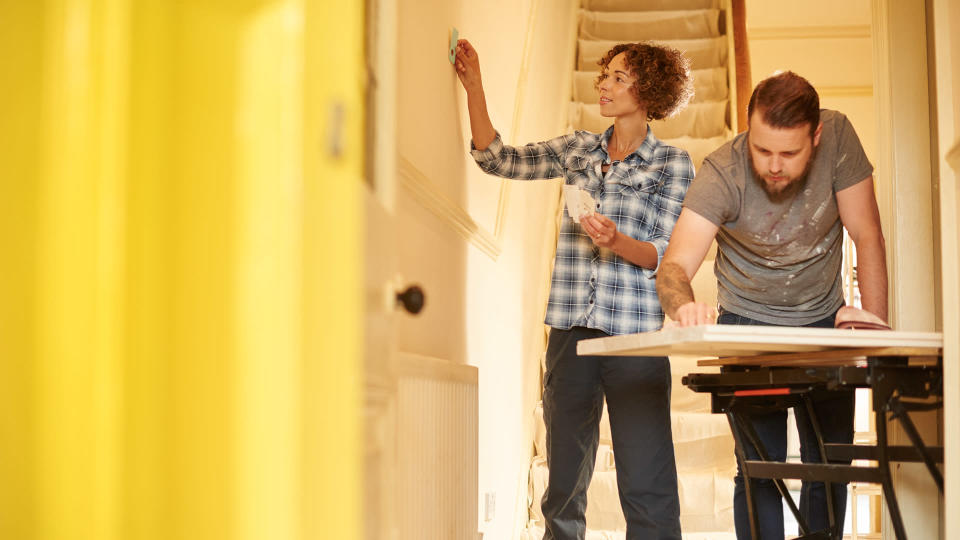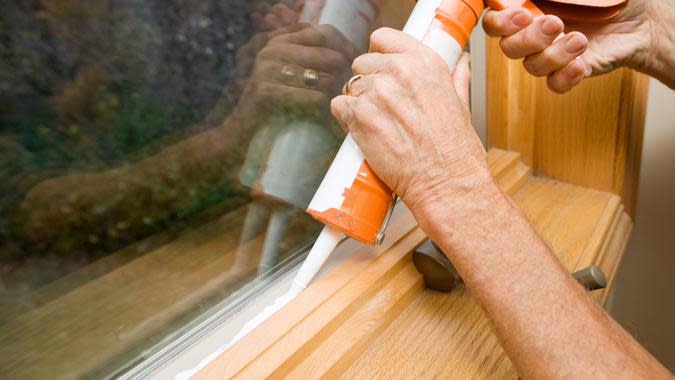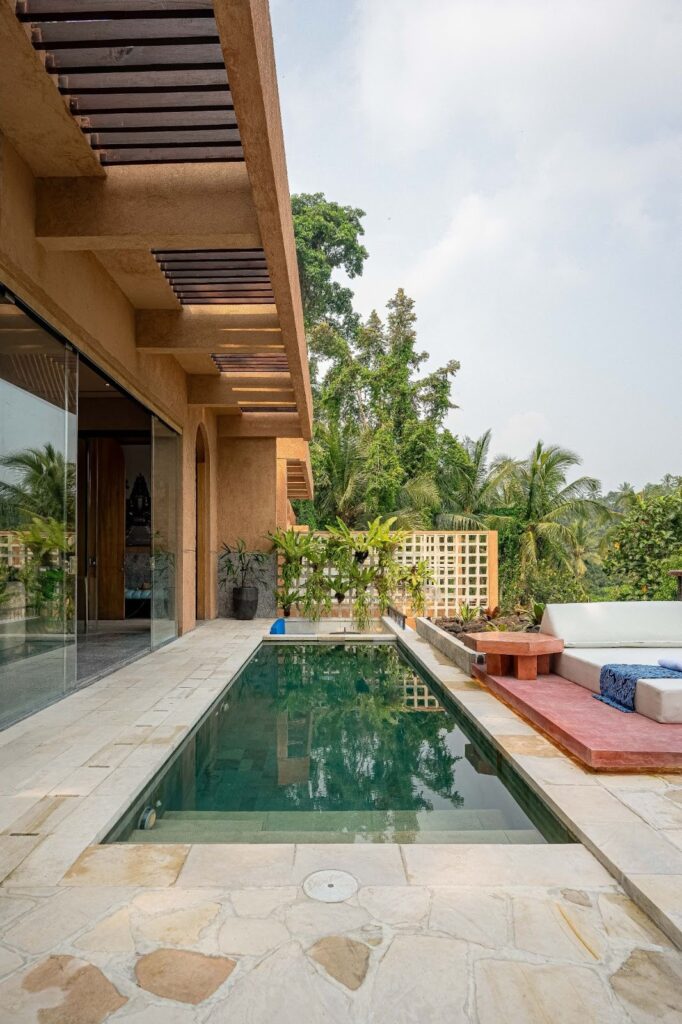6 Home Renovations You Can DIY

Americans spend over $400 billion a year repairing and renovating their homes, and that figure is likely to grow in 2022, according to a report from the Joint Center for Housing Studies of Harvard University.
Read More: Unplug These Appliances That Hike Up Your Electricity Bill
Small Business Spotlight 2022: Nominate Your Favorite Local Small Biz
Although improving home value is an important reason for home improvement projects, a recent State of Home Spending report from Angi revealed that lifestyle issues are the primary driver. With many still working from home and spending most of their time there – not to mention opening their homes to family and friends for the first time in two years – the adage that home is where the heart is rings truer than ever.
Whatever your motivation for improving your home, rising prices could stretch your budget beyond the breaking point if you’re not careful. One way to reign in costs is to do the work yourself. While some home improvements are best left to professionals, others make excellent DIY projects for handy – and even not-so-handy – homeowners.

1. Fix Windows Instead of Replacing Them
Estimated cost to DIY: $30
How much it costs for a professional: $653 for weather stripping and exterior caulking
Think some or all of your home’s windows need replacing? Instead of forking over thousands of dollars, try improving the efficiency of the existing windows for far less time and money.
A little insulation goes a long way toward closing any gaps that could be letting in air and increasing your utility bills. Strips of self-stick rubber weather sealing, available at hardware and home-improvement stores, are easy to cut to size and press into place along your window sashes.
Once the weather stripping is in place, head outside to check the condition of the caulk around your window frames. Cut away cracked and crumbling caulking with a putty knife and clean the area well before applying exterior-grade silicone caulk, Bob Vila advises.
Live Richer Podcast: How To Get Free Rent and Retire Early

2. Create a Permanent Home Office
Estimated cost to DIY: $500 for four linear feet of desk and shelving space from Elfa collection
How much it costs for a professional: $1,200 and up, according to The Home Depot
If you’re still using your kitchen table or bedroom as a home office, it’s time to create a dedicated space for work, and you don’t have to give up an entire room to do it. Converting an extra closet into a tiny but efficient home office space is a cost-effective, totally DIY-able project. All you’ll have to do is take the hinges off the doors, remove any hanging rods or built-in cubbies and hang a few shelves.
Although you might be able to find some cheaper shelves, you’ll get great quality and be able to add matching shelves in the future if you go with something along the lines of the Elfa collection from The Container Store. You’ll need a deeper shelf to use as a desktop — hang this one lower down so a chair comfortably fits under it. Then, hang a few shallower shelves above to store books, binders and other necessary office supplies.
Remember, you’ll need brackets for all the shelves. And if you don’t already have a chair to use in the office, that will add slightly to the cost. Still, it’s cheaper to do it yourself than to hire a professional, who would charge not only for supplies but for labor as well.

3. Add New Siding to Your Home’s Exterior
Estimated cost to DIY: $5,000 for 2,400-square-foot home
How much it costs for a professional: $19,000, according to Remodel’s 2022 Cost Vs. Value Report, citing national average cost
According to the 2022 Remodeling Impact Report from the National Association of Realtors, replacing vinyl siding ranks in the top 10 exterior projects in terms of livability and value, scoring a 7.9 out of 10 points, and returns 82% of the cost in resale value. The report, which is based on surveys from NAR, HouseLogic.com and NARI, evaluates the reason homeowners remodel, projects’ outcome and increased happiness owners experience after completing the projects.
But why pay a professional when you could get the job done yourself?
You’ll need to buy the vinyl siding, of course, and a few special tools available at any home improvement store. But once you have the materials — and possibly a handy friend to help hold the ladder and lay the siding — putting up your own vinyl siding doesn’t require any special skills.

4. Replace Old Flooring with New Vinyl Tiles
Estimated cost to DIY: $1.29 per square foot from The Home Depot
How much it costs for a professional: $9 to $13 per square foot, according to Homewyse
When you think of vinyl flooring, you might picture ugly bathroom floors in homes with dated décor. But vinyl isn’t what it used to be. In fact, you can buy high-quality vinyl tiles that look like wood or stone.
With minimal effort — and a minimal budget — a homeowner can replace outdated, damaged or generally hideous flooring by laying down these tiles, which are available in a peel-and-stick format to make the job easy enough even for a non-professional. With tiles available for little more than $1 each, this is a do-it-yourself job that could transform a space for relatively little money.
The best part: It’s removable. If you like to change the look of your house every couple years, you can remove one vinyl flooring pattern and stick on another for only a bit of time and the cost of materials.
If your wood floors are fine as they are except for squeaking, don’t bring a carpenter in to fix the problem. Just sprinkle cornstarch, available in the baking-goods aisle of the supermarket, in between the floorboards to reduce friction and cut down on the noise. A note of caution: the powder could make the floors slippery.

5. Plant a Tree Windscreen To Protect Your Home’s Exterior
Estimated cost to DIY: $155 per fast-growing Thuja Green Giant, 5 to 6 ft., from various online retailers
How much it costs for a professional: $300 per tree, according to HomeAdvisor, but volume discount is possible
Though you might enjoy your neighbors’ company, some privacy is always nice. To add value to your property, consider planting a tree windscreen. This will not only protect your home’s exterior and possibly reduce your utility bills, but also shield you from too much company.
Be sure to leave enough room for the trees to grow without growing too much into each other. The exact distance between the trees will depend on the type you choose. In general, fast-growing evergreens work best for this purpose since they won’t become barren in winter like other trees.
You can buy the trees from a local arborist, a tree nursery or online. If you plant the trees yourself rather than hire a professional, you’ll likely save hundreds of dollars on the project.

6. Build an Outdoor Space, Patio or Deck
Estimated cost to DIY: $4.50 per square foot for polypropylene interlocking patio tile from The Home Depot
How much it costs for a professional: $10 per square foot for basic patio, according to Angi
Who doesn’t love to settle down for some quiet time in the great outdoors while staying nice and close to home? Outdoor spaces can expand your total living space without breaking the bank.
Instead of paying someone to build a fancy deck or balcony, consider the much cheaper, much more DIY-friendly option of building a patio. Patios serve the same purpose as a deck without requiring the craftsmanship skills to build. Made of plastic, stone or concrete — or even wood panels — laid on the ground, all it takes to create a patio for grilling, chilling and partying is a few paver stones or a few sets of interlocking patio tiles and an afternoon.
More From GOBankingRates
Daria Uhlig contributed to the reporting for this article.
This article originally appeared on GOBankingRates.com: 6 Home Renovations You Can DIY






